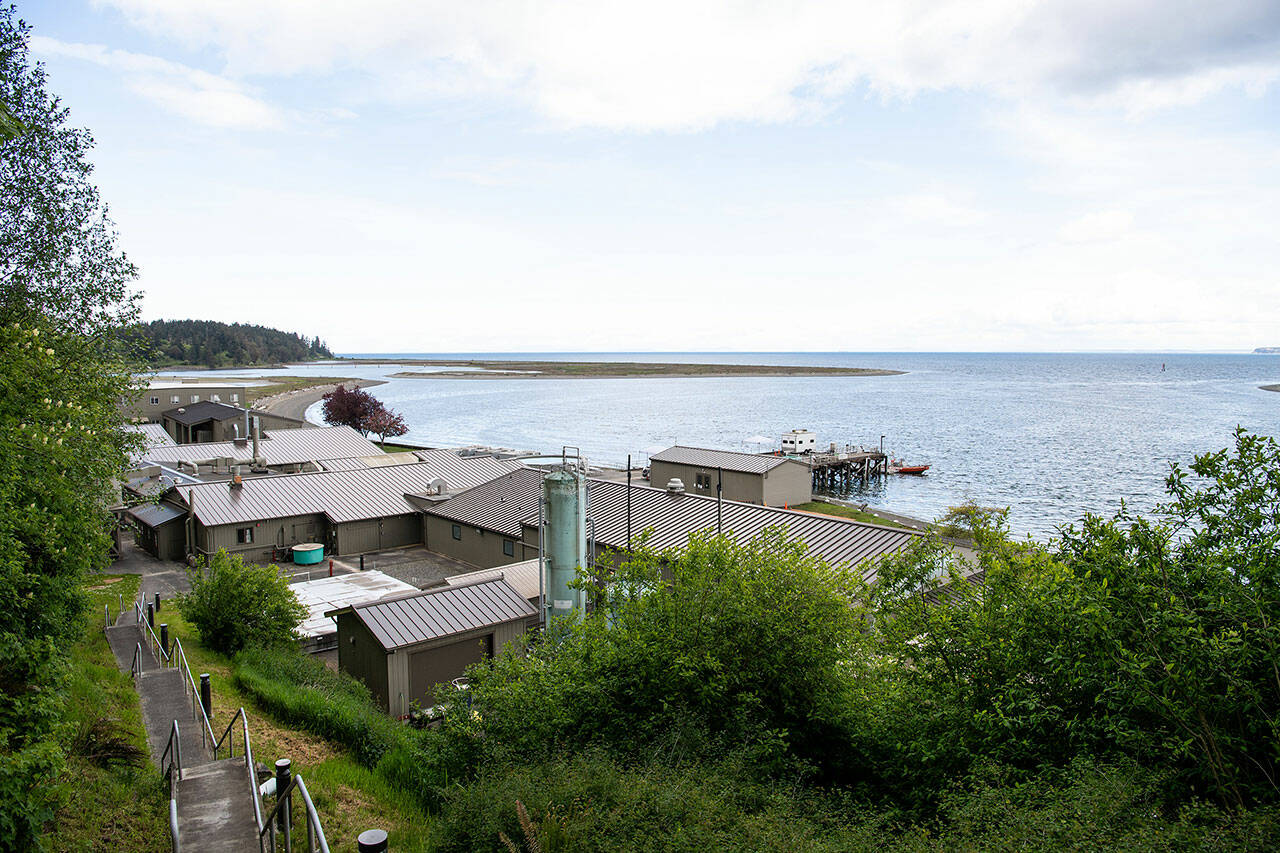Funding is secured and planning is underway to expand PNNL-Sequim, the Department of Energy’s only marine and coastal research laboratory.
T.J. Heibel, renewable energy lead for PNNL-Sequim, said in an interview that planners and researchers are working together to design new engineering and technology laboratory space by Washington Harbor along Sequim Bay.
Two temporary marine science lab buildings on the west shoreline will be demolished to make room for a three-story building with a tall bay area for larger projects.
“Marine energy research equipment is huge and we need it in a controlled environment,” Heibel said.
Currently the upper and lower PNNL-Sequim campus hosts nearly 15,000 square feet of research space for about 100 staffers.
“We want it to be a lasting asset that serves the nation,” Heibel said of PNNL-Sequim.
Additional improvements, he said, include updates to the shoreline infrastructure with more smaller rectangular seawater tanks to replicate testing scenarios and build confidence in research results.
They’ll also update the dock to better accommodate the new $4.55 million RV Resilience, a first-of-its-kind hybrid research ship.
At the Sept. 5 ship dedication, Senator Maria Cantwell (D-WA) said she helped secure nearly $21 million for PNNL-Sequim’s expansion to “build prototype marine devices and instruments to go on research vessels just like the one we’re dedicating today.”
Cantwell said, “This partnership here at Sequim is very critical to our nation” as Washington state’s coastal sectors employ more than two million people and contribute more than $40 billion to the state, and $400 billion to the state economy.
Cantwell and PNNL (Pacific Northwest National Laboratory) staff said other planned investments at PNNL-Sequim include a pre-permitted marine testing site, an underwater cabled array connecting at-sea devices to shore facilities, and an onshore microgrid and battery storage system.
Utilities
Another key element to PNNL-Sequim’s expansion includes bringing utilities from the City of Sequim to the laboratories.
Heibel said part of the secured funds will help PNNL-Sequim pay to install pipelines from West Sequim Bay Road to the campus. They will keep an artesian well for research purposes because the water is so clean, he said.
Discussions to bring utilities to the campus have been a talking point for decades, PNNL-Sequim staff said.
Nick Dostie, Sequim’s city engineer/deputy director of public works, said city staffers are in discussion with PNNL about a future annexation as they plan to bring utilities to the site.
PNNL’s utilities will connect to a project called the West Sequim Bay Corridor Improvements — about $16.3 million in projects, included in the city’s Capital Improvement Program for 2025-2030.
Dostie said this will bring city utilities to the corridor for the first time and allow for full build out of the area’s lots/parcels for sewer, while water will need to be extended further down the corridor at a later date.
The new service area will include 350 acres of R4-8 (residential) zoning, 170 acres of Planned Residential Community zoning, and 90 acres of High-tech Light Industrial zoning.
The corridor project will go along West Sequim Bay Road from Washington Harbor Road to Forrest Road for sewer utilities, and from Independence Drive to Junco Road and Washington Harbor Loop for water utilities.
The city purchased a parcel at Forrest Road for $70,000 in June 2023 to host Sequim’s largest lift station designed for full build out of the service area, Dostie said.
City staff plan to go to bid for the project in the second or third quarter of 2025, he said, with construction possible in the first quarter of 2026, and pipeline and lift station construction complete in the third or fourth quarter of 2028.
When construction tentatively begins on the project, Dostie said portions of West Sequim Bay Road will be closed to through traffic with only local access available.
Funding for the corridor project comes through the Department of Ecology Small Community Project Priority List as a partial loan and partial grant, where the city cannot receive more than 12% grant funding, Dostie said.
The City of Sequim is also seeking funding from PNNL and other applicants benefiting from the new sewer lift station, he said.
The laboratory sits on the S’Klallam village site of sxʷčkʷíyəŋ, which was purchased by Hans Bugge in 1899, and used as The Bugge Cannery until 1966. Six years later, a fire destroyed the cannery structure, and laboratories and research space were built in the 1970s.
PNNL-Sequim researchers cover a number of topics from marine renewable energy to coastal resilience to monitoring the environment.
For more information, visit pnnl.gov/pnnl-sequim.



